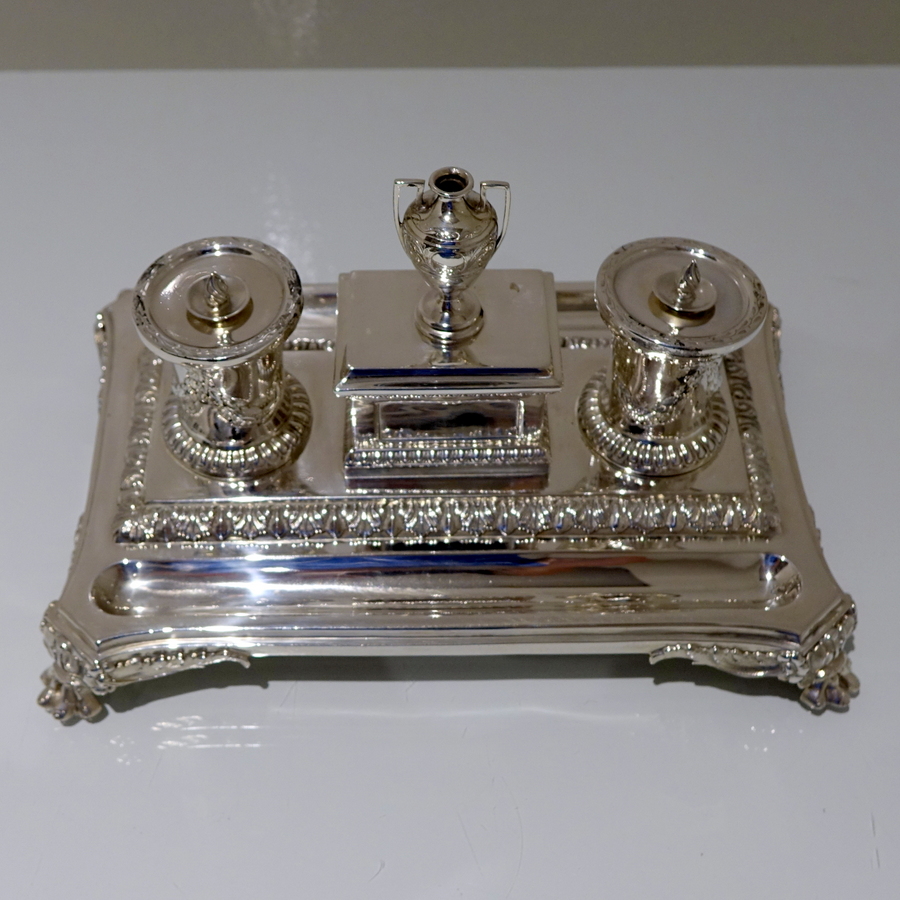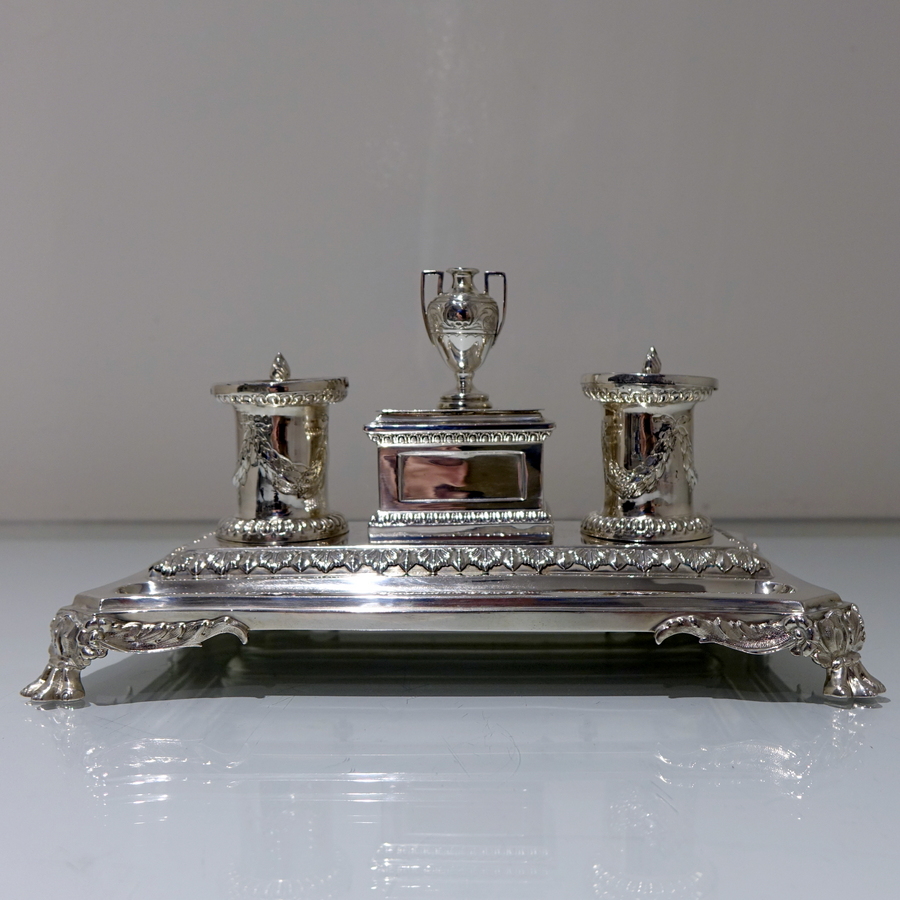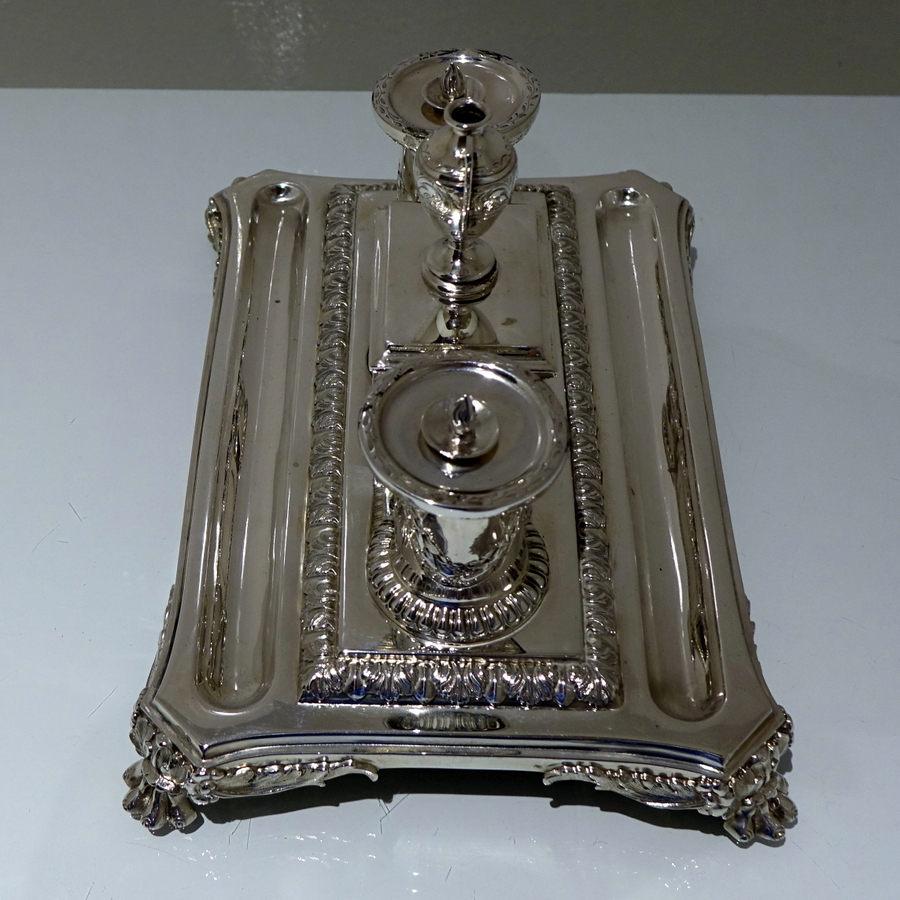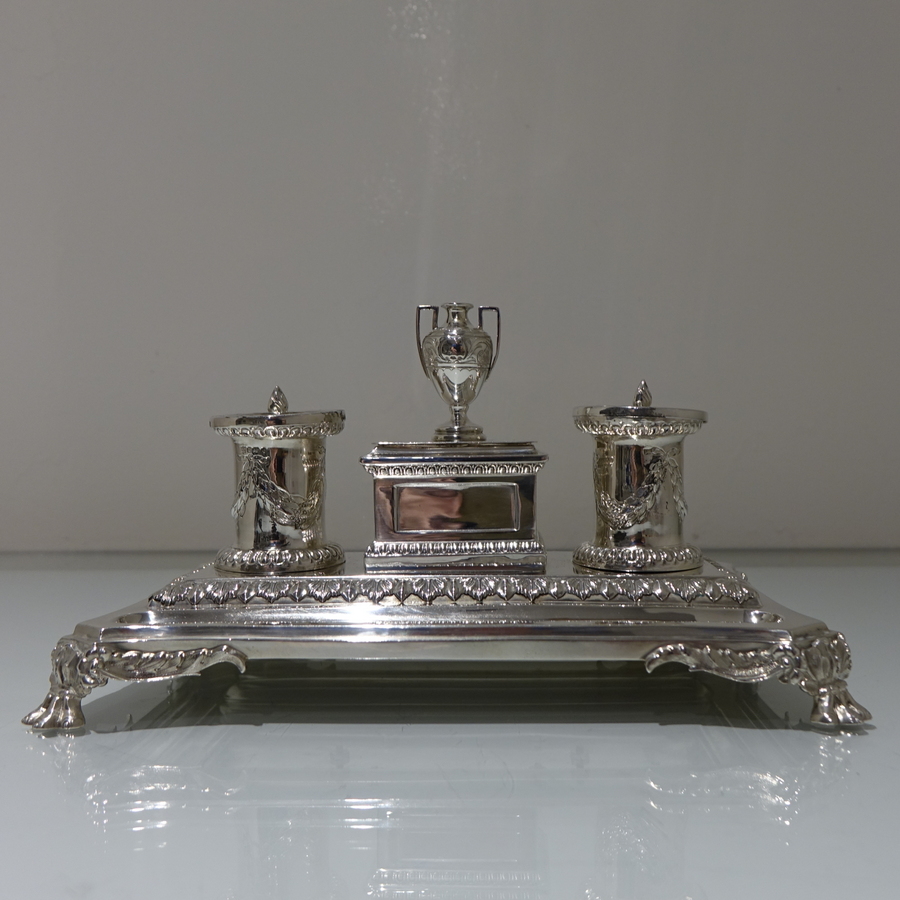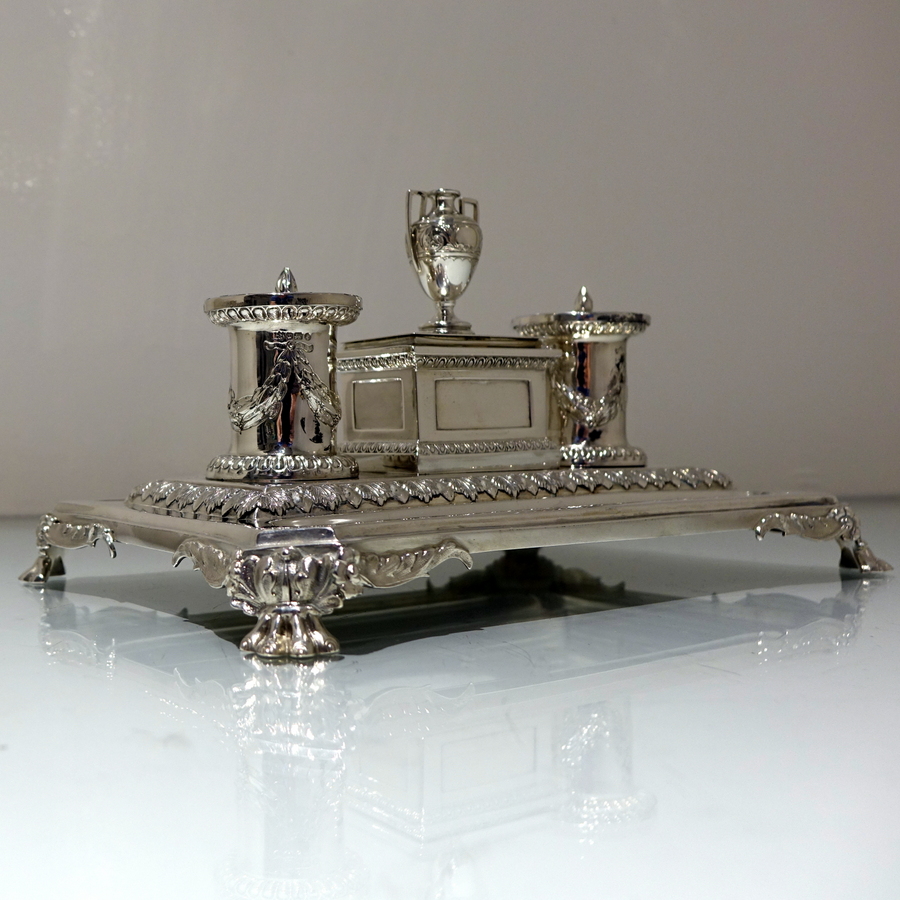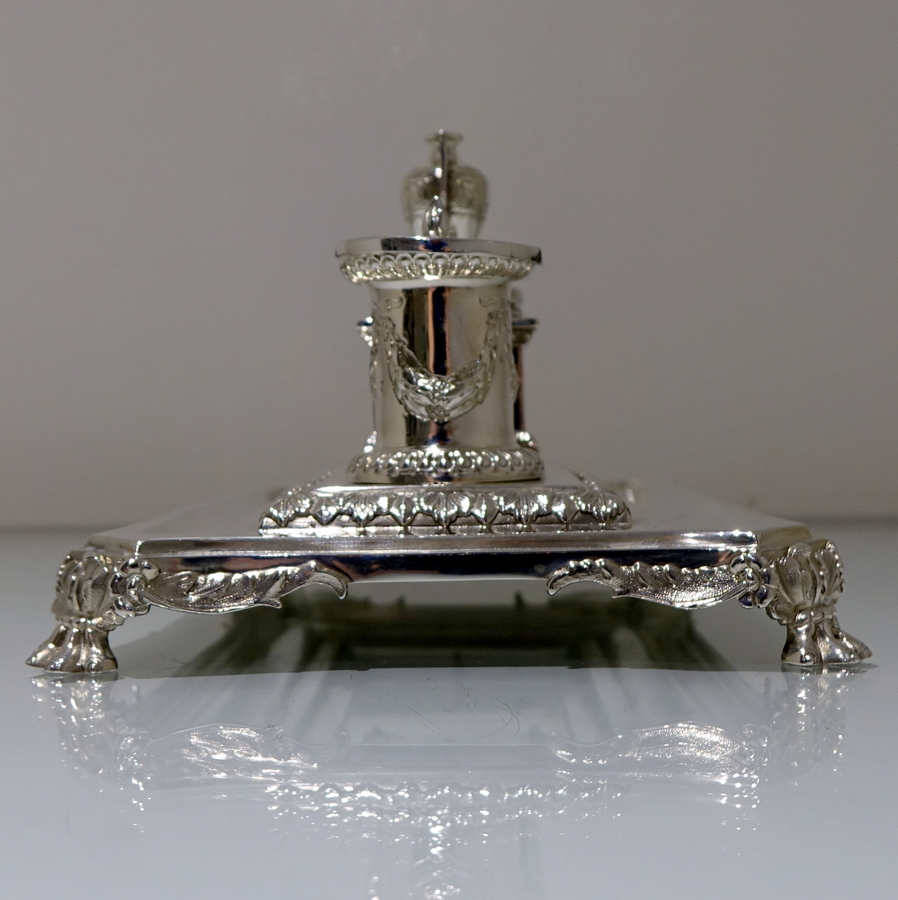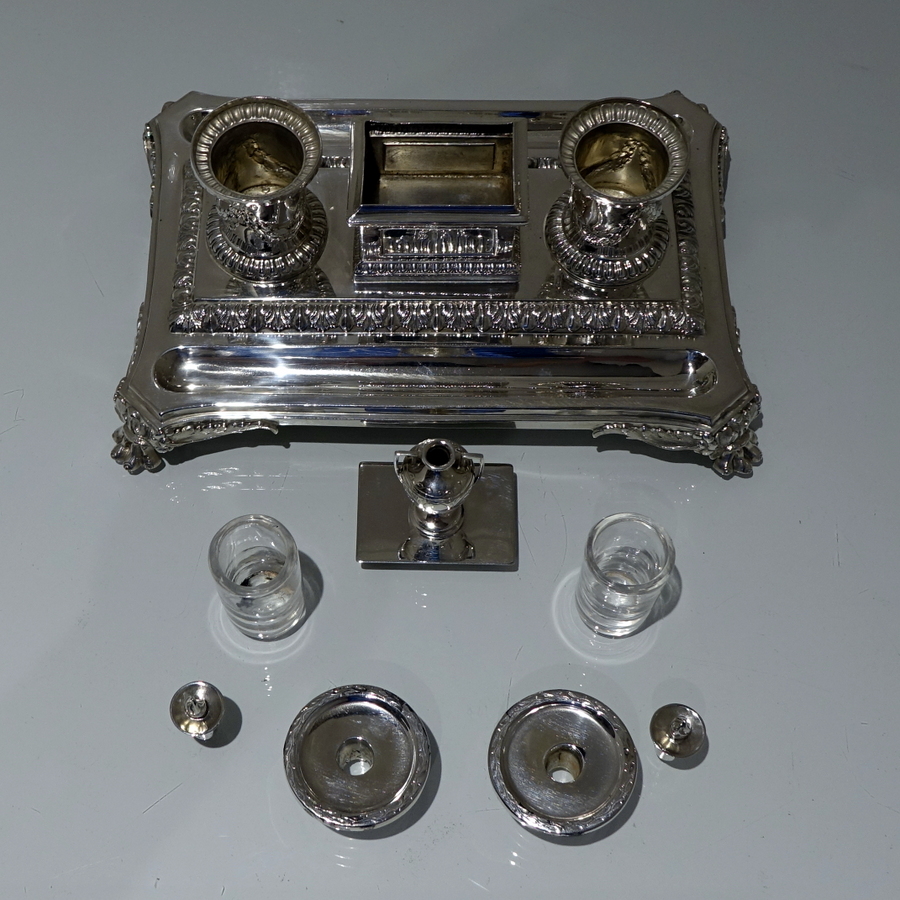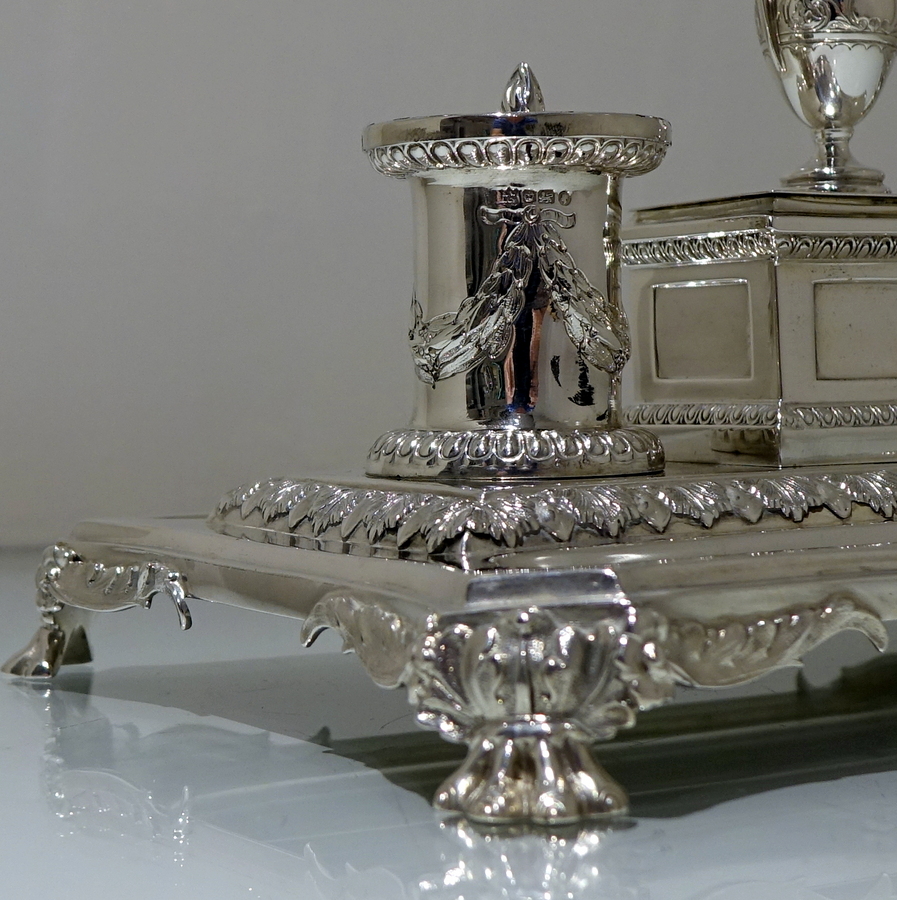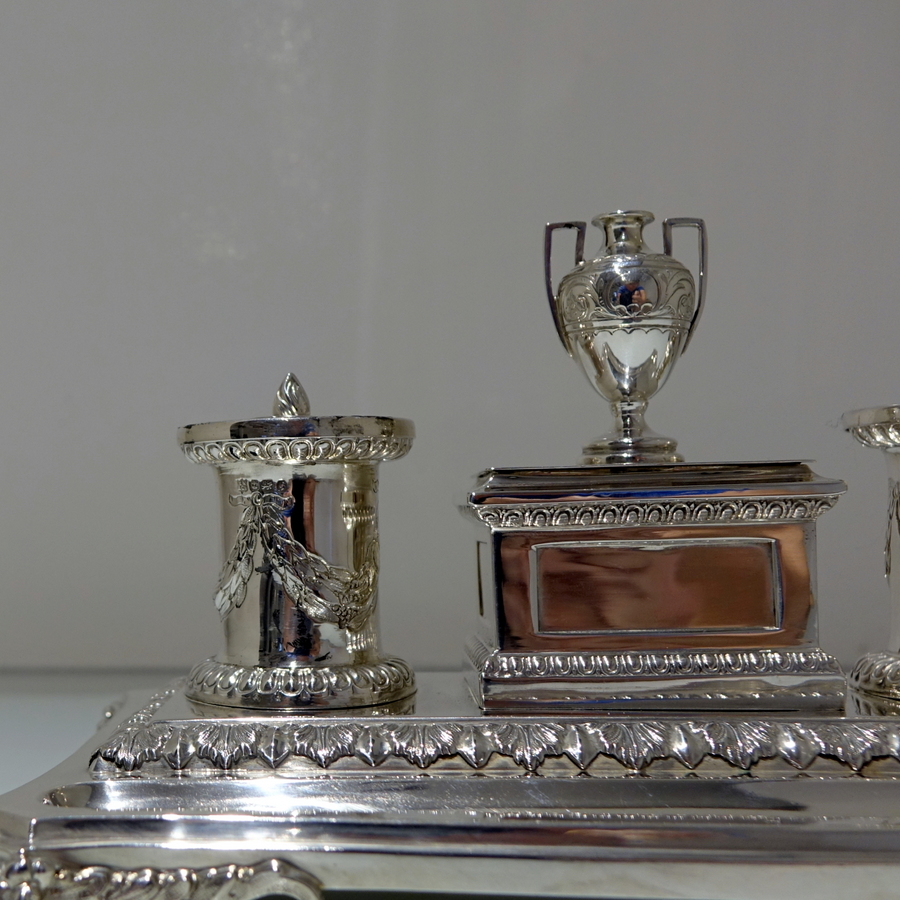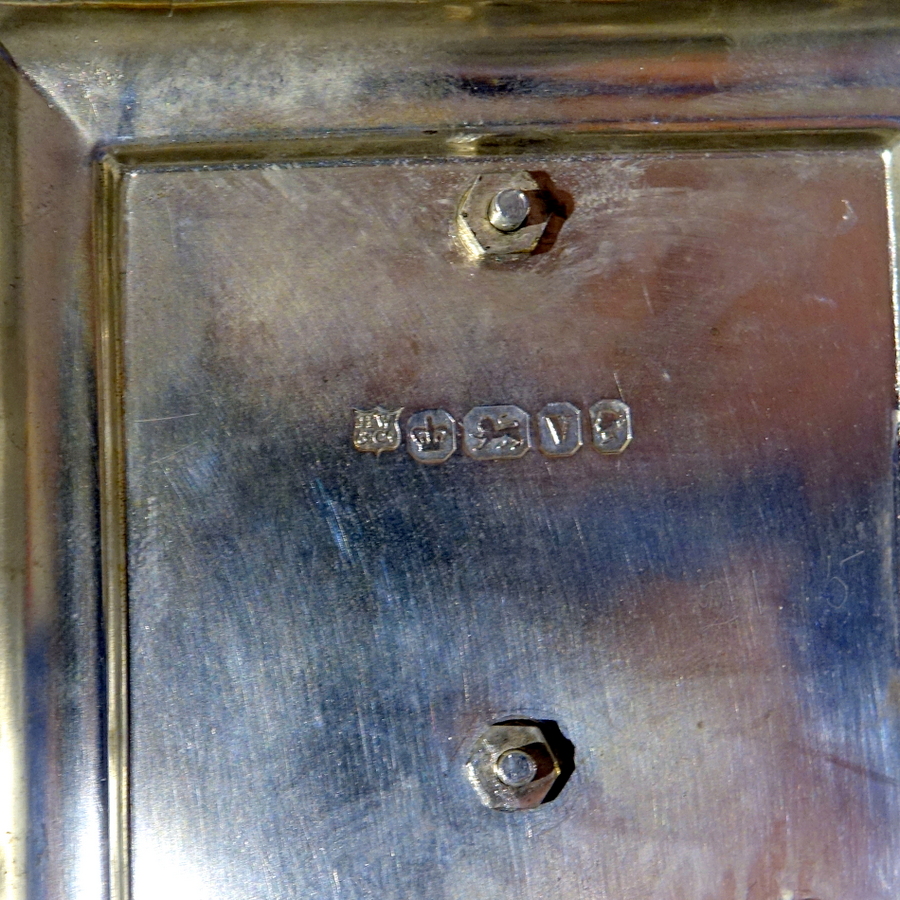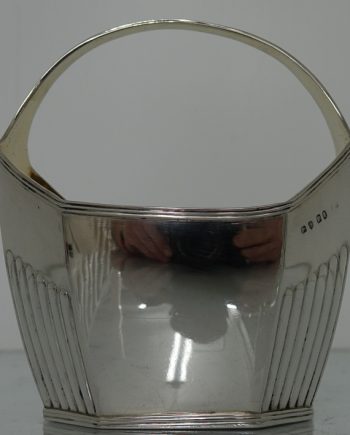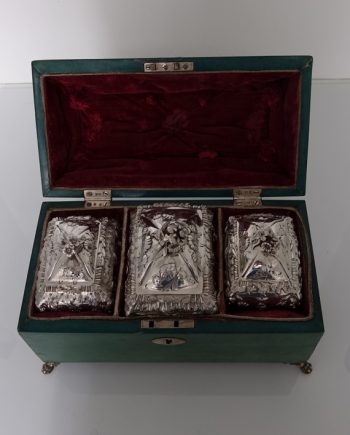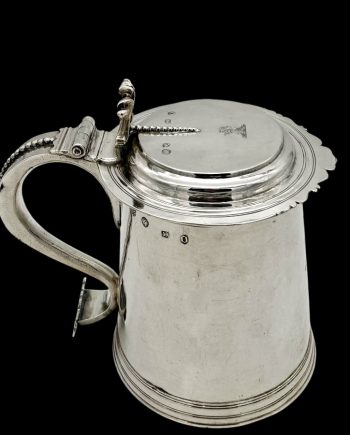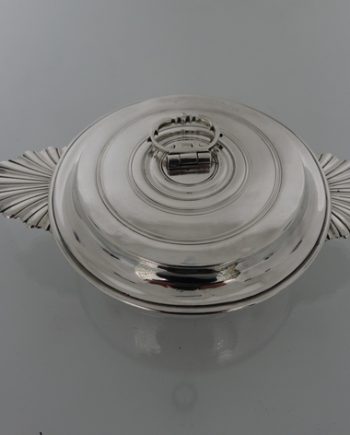Description
A splendid rectangular Victorian inkstand decorated with an inner ornate galleried border and two elongated oval pen trays. The ornate drum inkwells have a lower gadroon border for lowlights and the inkstand itself sits on four decorative claw feet.
Weight: 23.4 troy ounces/728 grams
Height: 5.5 inches/13.5cm
Length: 10 inches/25cm
Width: 7 inches/18cm
Condition: Excellent throughout
Price: £1675
It is difficult to trace the origin of the firm in the 18th and the first part of the 19th century, owing to the complexity of intertwined partnerships involving the numerous firms active in Sheffield in the silver business. The Chronology until 1829 is only a hypothesis largely based on Frederick Bradbury’s book on Old Sheffield Plate (first published in 1912). Anyway, Henry Wilkinson & Co, Plate Worker, Norfolk Street, Sheffield entered its first mark in the Sheffield Assay Office on September 24, 1831. Henry Wilkinson & Co was involved in the manufacture of Old Sheffield Plate and was the second firm in Sheffield to receive a licence for the use of the electroplating system (1843).
Various pieces of its production were successfully exhibited at the Great Exhibition of 1851 Since the 1850s Henry Wilkinson & Co was active in London with James Price as agent and from 1857 with a Showroom at 4 Bolt Court, Fleet Street (later, Ely House, 13 Charterhouse Street, Holborn Circus). Hallmarks were entered in London Assay Office in 1857 (by Henry Wilkinson) and 1879 (by John Brashier). In 1872 the firm was converted into a Limited Liability Company under the style Henry Wilkinson & Co Ltd. In 1892 the business went into liquidation and was bought by Walker & Hall.
CHRONOLOGY:
J.Winter c. 1760
Winter, Parsons & Hall c. 1770-1773
John Parsons & Co 1773-1787
J. & T. Settle c. 1815-1829
Settle & Wilkinson c. 1829
Henry Wilkinson & Co c. 1830-1872
Henry Wilkinson & Co Ltd 1872-1892



